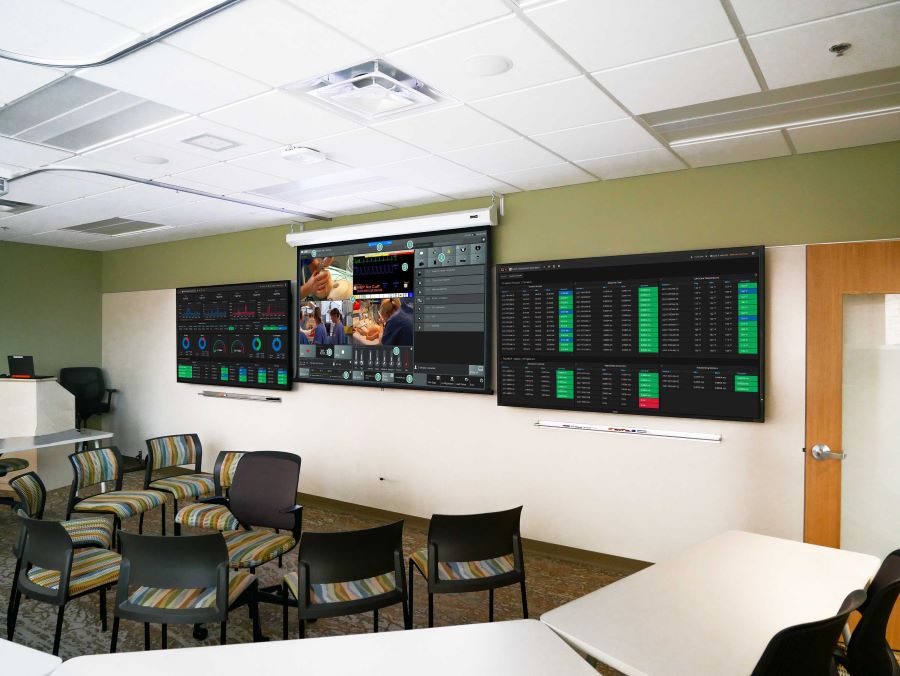
4 Considerations for Getting Your Med Sim Lab Back Up and Running
Simulation labs are operating under new guidelines in the COVID-19 era
When the coronavirus pandemic swept through the U.S. at the start of 2020, it forced the partial or complete closure of medical simulation training labs for healthcare students. Now, over a year later, COVID-19 is still ravaging the world and delaying the return to work, school, public events, and other activities.
Unfortunately, the longer students remain out of the lab, the more their education suffers. Healthcare simulation is a vital tool for teaching our future medical professionals valuable clinical, communication, decision-making, and teamwork skills. With that thought in mind, many simulation labs in Los Angeles, CA, and across the U.S. are considering reopening.
However, before doing so, your lab needs to set guidelines and policies in place to protect the health and safety of students, staff, and instructors. If you’re ready to get your sim lab back up and running, keep reading to learn four considerations for your reopening strategy.
SEE ALSO: Does Your Healthcare Facility Need VR Medical Simulation Technology
1. In-Person Safety Measures
Your lab will need to enforce several safety measures to ensure that students, staff, and instructors return safely. The following are common COVID-19 precautions your lab may choose to implement:
- Mask mandates
- Vaccine mandates
- Temperature checks
- Negative COVID-19 test results
- Limitations on in-person participants
Depending on the part of the country your lab is in, some of the above measures may already be mandatory at the hospital and university, county, or state level. No matter which safety measures you choose to enact, make sure you communicate clear expectations to students and staff and be prepared to enforce consequences for non-compliance.
Additionally, your lab will need to follow strict guidelines for sanitizing equipment, enforcing handwashing, wearing PPE, and ensuring adequate room ventilation.
2. Monitoring and Tracking
Before you reopen your healthcare simulation lab, you need to have clear-cut processes in place for symptom and exposure monitoring and tracking. Consider taking the following steps to reduce the risk of an outbreak in the lab.
- Tracking and documenting when students and staff were in the lab
- Conducting pre-lab health surveys asking students and staff to report if they’ve been recently ill or been in contact with anyone who’s sick
- Having a designated portal, email, or phone number where students and staff can report a positive COVID-19 test or positive symptoms
- Forming standard communication protocols to inform students and staff if they’ve been exposed to a COVID-19 infection
- Requiring proof of a full recovery and adequate quarantining from students and staff with previous COVID-19 infections before they can re-enter the lab
3. RethinkingLab Design
Historically, medical simulation labs have not been designed for social distancing. Quite the opposite is true — students are expected to share equipment and manikins and work closely to complete simulation scenarios.
As much as it can be, lab design needs to be reconfigured to accommodate social distancing. For example, your lab should have signs posted with the number of people allowed in each room at a time, along with signage and footprint markers to denote one-way routes and acceptable standing distance. Additionally, consider adding multiple debriefing rooms to limit large gatherings in a single room and allow for social distancing.
Of course, these changes are not without cost: more debriefing rooms require new technology like displays and sound systems for each room, plus increased staffing to lead multiple sessions. If you’re uncertain how to proceed, we recommend reaching out to an AV integrator and simulation expert to discuss the logistics and budget required to redesign a medical sim lab.
4. Supplemental Learning
Even after your lab reopens, in-person participation will be limited for at least the next several months, if not longer. Consider supplementing in-person simulation scenarios with virtual simulation sessions that students can complete on their laptops at home. Online healthcare simulations offer students an engaging and interactive way to practice clinical, decision-making, and communication skills in a user-friendly web-based platform.
If you need help getting started, we have several recommendations for virtual platforms here:
Incorporate Online Simulations Into Your Healthcare Curriculum
Level 3 Audiovisual has years of experience designing, engineering, and installing medical simulation labs for medical schools, nursing schools, training hospitals, ORs, or ERs. Let us help you find the simulation solutions you need to navigate the COVID-19 landscape. Give us a call or reach out online to set up a consultation.

